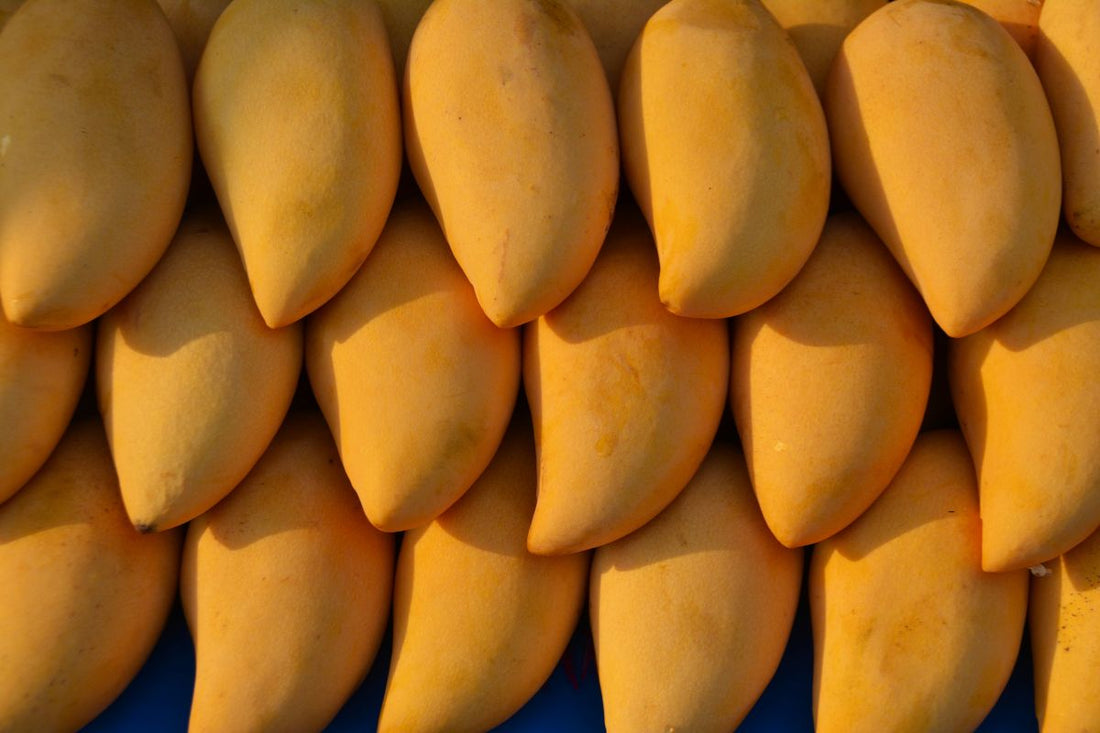There are fruits, and then there are mangoes. Ask anyone from Pakistan what the true king of fruits is, and you’ll hear the same answer: aam. These mangoes aren’t just food; they’re an emotion, a cultural symbol, and for many, a taste of home.
The country produces some of the sweetest, juiciest mangoes in the world, with a reputation that stretches from the orchards of Multan to dining tables in London, Dubai, and New York. Each summer, millions of crates leave the fertile plains of Punjab and Sindh, destined for families abroad eagerly waiting to break open their first box of the season.
I still remember eating them as a child. At the time, I was too young to know where they came from. We used to eat them all summer and all I knew is that it was mango season and mum always used to bring them out after dinner for dessert. Years later, I finally learnt to associate that memory with the legendary Chaunsa. The fragrance always hits you before you cut it open – honeyed, floral, intoxicating. When you scoop out a slice, it melts in the mouth like custard. Sweet but not cloying, smooth but with character. That bite alone explained why both Pakistanis and Indians abroad will pay anything to get their hands on these fruits.
This guide explores what makes these mangoes so special – from varieties and seasonality to taste, traditions, and memories that connect generations. Curious to learn more? See our mango collection when the summer harvest begins.

How Many Types of Mangoes Grow in Pakistan?
Over 100 varieties exist, though only a dozen or so are widely cultivated and exported. Each has its own character – some smooth and creamy, others fibrous or tangy, each beloved by different regions and families.
Famous Varieties
- Sindhri – large, golden, smooth, early-season; often the first to arrive in May.
- Chaunsa – small to medium, explosively sweet and juicy; peaks July–August.
- Anwar Ratol – small but mighty; rich and syrupy.
- Langra – green-skinned even when ripe; tangy-sweet, full of personality.
- Dussehri – delicate and smooth, popular across the north.
Lesser-Known Varieties
- White Chaunsa – a paler cousin of the Chaunsa with a subtler sweetness.
- Fajri – larger and less sweet, but with a long shelf life.
- Shan-e-Khuda – literally “Glory of God,” one of the largest varieties with a bold flavour.
- Saroli – small, fibrous, and tangy, often used in pickles and preserves.
- Neelum – aromatic, mid-season, and well-loved in Punjab.
From personal tasting, my favourites remain: 1. Chaunsa, 2. Anwar Ratol, 3. Sindhri, 4. Langra, 5. Dussehri. Chaunsa’s custard-like texture always wins, but Anwar Ratol’s punchy sweetness always surprises.

What Makes Them So Distinct
Climate and Soil
Mangoes need heat, sun, and rich soil. The Indus River basin provides fertile alluvial ground, while long, hot summers give the fruit time to ripen naturally. Unlike supermarket mangoes picked green and artificially ripened, these usually ripen on the tree before harvest.
Taste Profile
- Juicier than many Indian varieties
- More perfumed, with floral undertones
- Naturally sweeter, with little to no acidity
When I’ve done side-by-side tastings, Alphonso comes across rich and buttery, but Chaunsa is lighter, juicier, more refreshing. Customers I’ve shared them with often say, “It tastes like sunshine in fruit form.”

The Mango Season
The season is short but glorious.
- Early (May–June): Sindhri, Dussehri
- Mid (June–July): Anwar Ratol, Langra
- Late (July–September): Chaunsa, White Chaunsa, Fajri
Peak season runs May to September, though timing depends on weather. In the UK, the first Sindhri boxes usually arrive in early June, followed by Anwar Ratol mid-month, then the much-anticipated Chaunsa by July.
Where They’re Grown
Mango orchards stretch across Punjab and Sindh, blessed with heat, river soil, and patience.
- Punjab (Multan, Rahim Yar Khan, Bahawalpur): Famous for Chaunsa, Anwar Ratol, and Langra.
- Sindh (Mirpur Khas, Tando Allahyar): Known for Sindhri, thriving in the hot, dry climate.
A supplier once told me: “In Sindh, we get mangoes so big you need both hands to hold one. In Multan, it’s about fragrance — you can smell the orchards before you see them.”

Nutrition & Health
On average, 100g of mango flesh contains about 60 calories. A medium fruit (around 250–300g edible portion) provides roughly 150–180 calories along with vitamin C, fibre, and antioxidants like mangiferin and beta-carotene.
Whenever people ask about calories, I remind them that everything is a choice. Yes, mangoes are sweet — but far healthier than processed desserts. If you’re going to treat yourself, choose something nature made perfectly already.
Ripening & Cutting Tips
Ripening
- Keep mangoes at room temperature, ideally in a paper bag.
- Avoid the fridge until ripe — cold halts the process.
- Once soft and fragrant, refrigerate to extend freshness.
I usually find Chaunsas ripen within 2–3 days of arriving in the UK.
Cutting
- Hedgehog: slice, score, flip.
- Traditional: scoop with a spoon.
- My favourite: slice the top off and drink the juice straight — messy but unforgettable.

Final Thoughts
Mangoes from Pakistan aren’t just fruit — they’re part of a season, a memory, and a connection across borders. From the golden Sindhri to the beloved Chaunsa, each one tells a story of land, sunlight, and time.
If you’ve grown up with them, you already know. And if not, wait for summer — and you’ll understand why nothing else quite compares.

